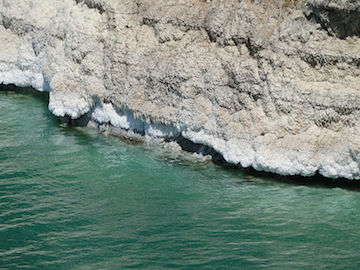401016-sea salt.jpg

The Dead Sea contains some of the saltiest water in the world. Credit: Bernard Gagnon, Wikipedia, GNU Free Documentation License
You can barely open a cookbook or watch a show on Food Network these days without being bombarded with the virtues of sea salt. Some chefs think it tastes better than table salt, or they prefer its texture or color. And some even claim that it’s better for you than table salt.
Yet chemically, sea salt and table salt are almost identical. And they have the same origin as well — both come from minerals that settled to the bottom of the ocean or another body of water.
Sea salt is typically harvested from shallow ponds at the edge of an ocean, a sea, or a salty lake. Salt settles easily in the still water, forming fresh beds that are easy to harvest.
Table salt was typically deposited millions of years ago, forming layers of rock that can be up to hundreds of feet thick. It’s gathered by drilling a well, injecting water to dissolve the salt, then letting the salty water flow to the surface through a second well.
The main difference in the two types of salt is how they’re processed. Table salt is refined to remove any impurities. Sea salt, on the other hand, retains traces of magnesium, potassium, and other minerals. The minerals can add color, and perhaps even some flavor. Sea salt also typically has coarser grains, adding some crunch.
Yet nutrition experts say that both forms are made almost entirely of the same ingredient — sodium chloride — the mineral that makes the sea salty. So while one form may appeal more to the senses, there’s not much difference in these “salty” gifts from the sea.

